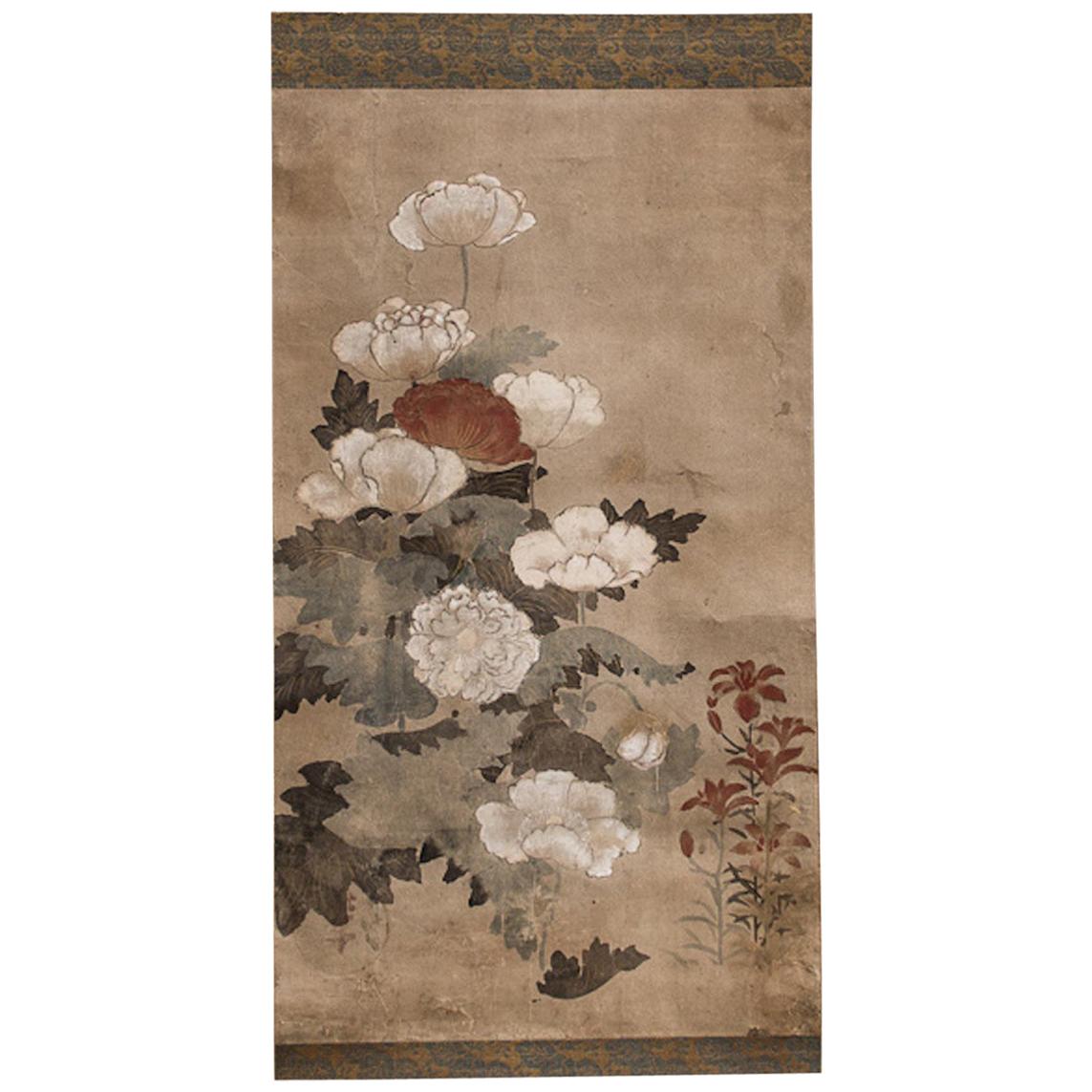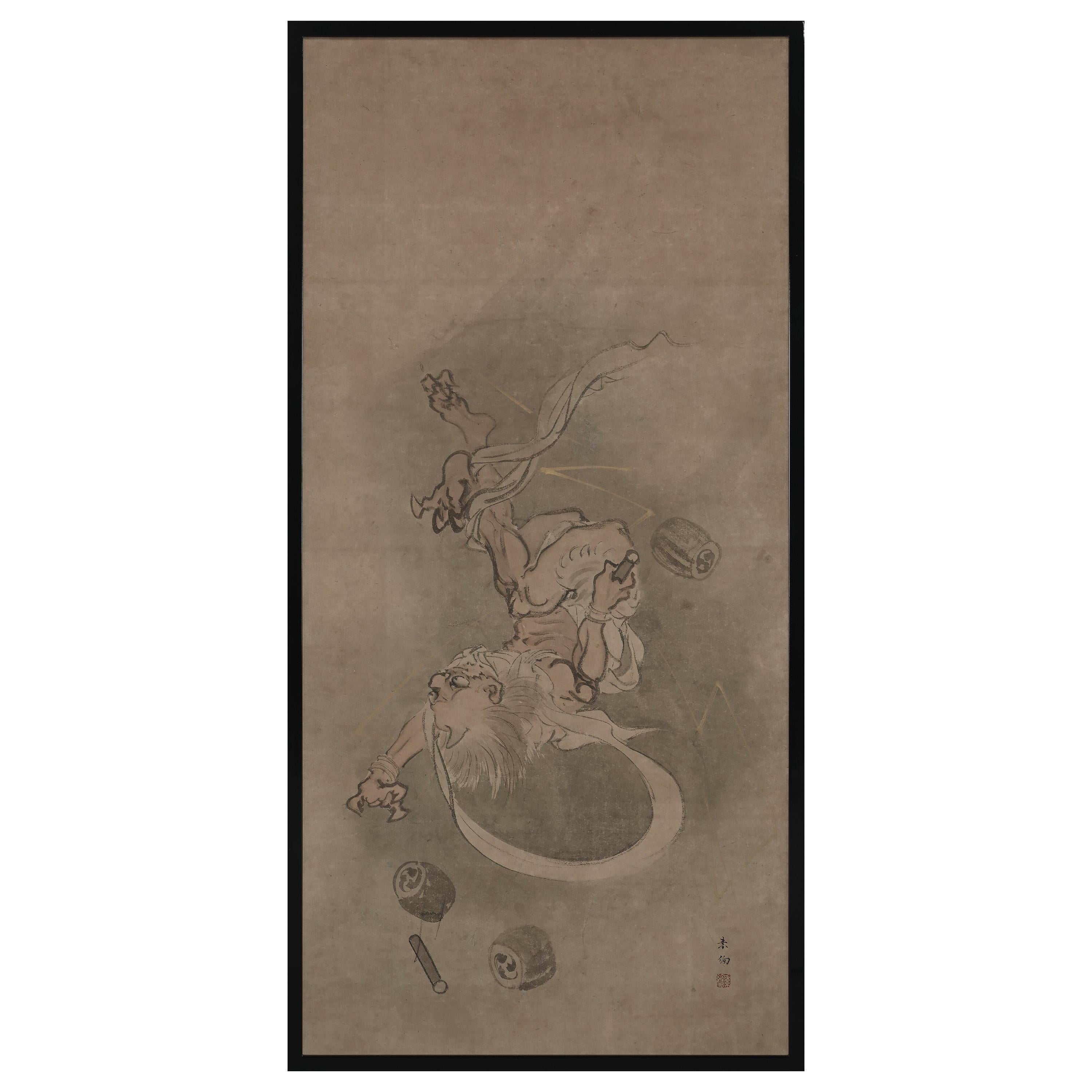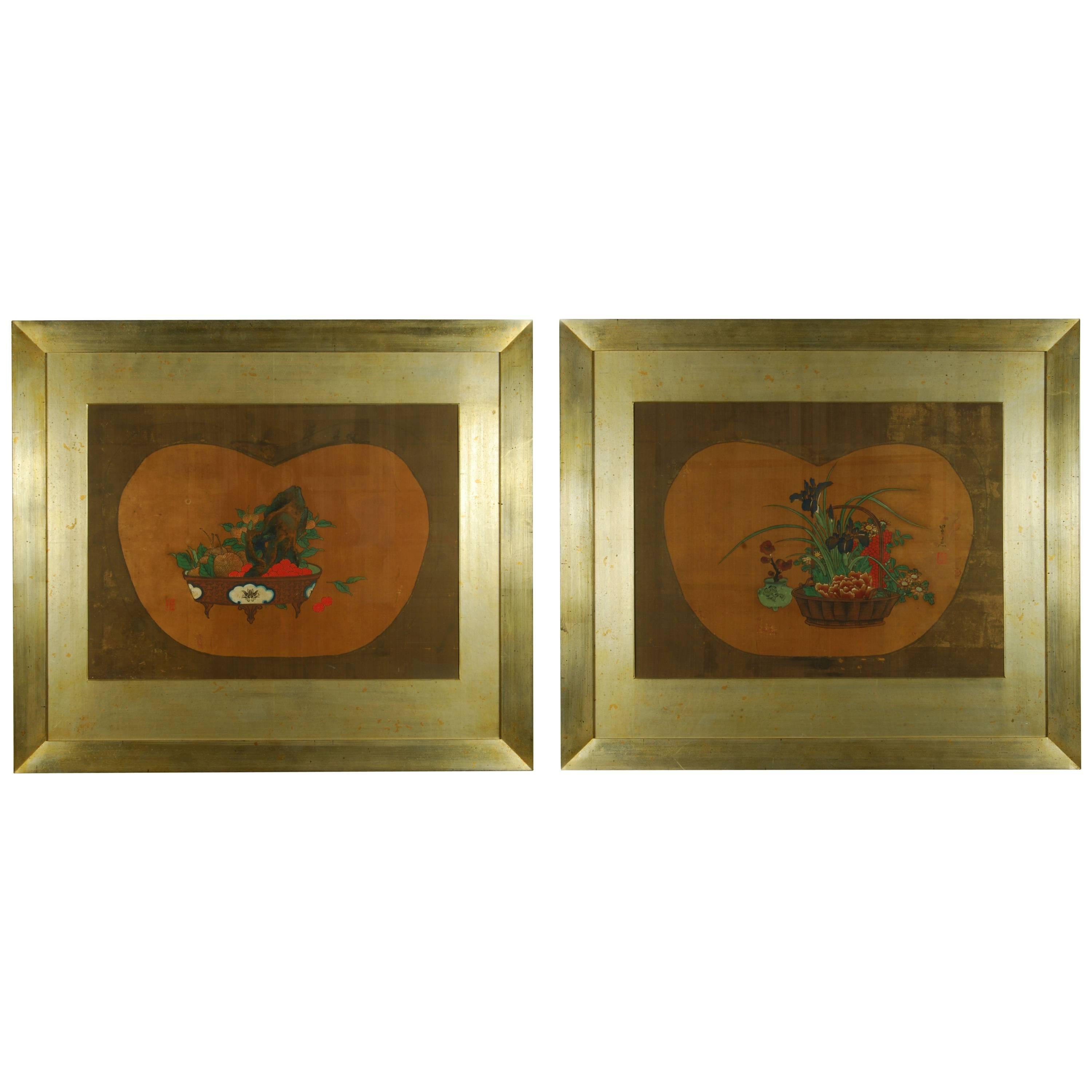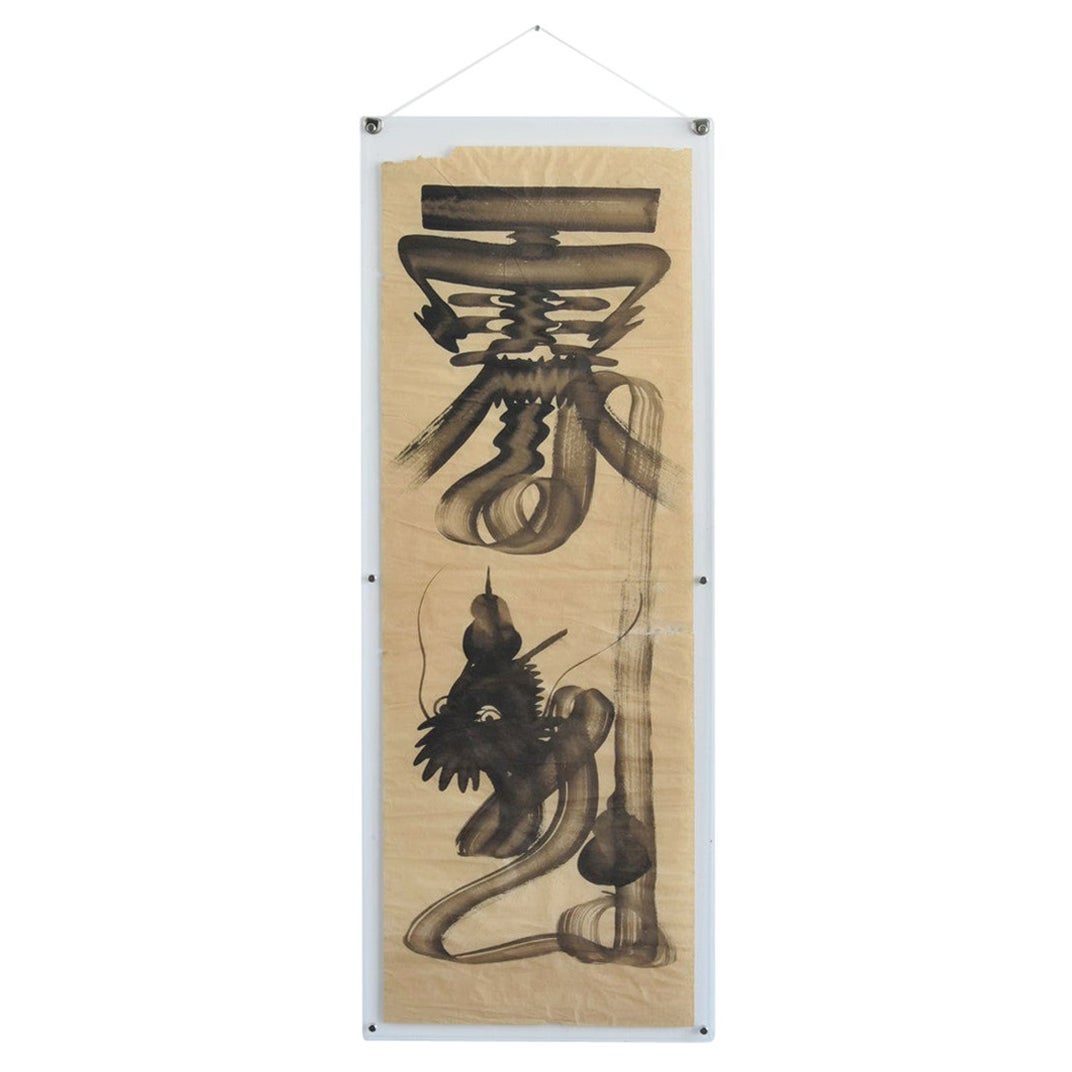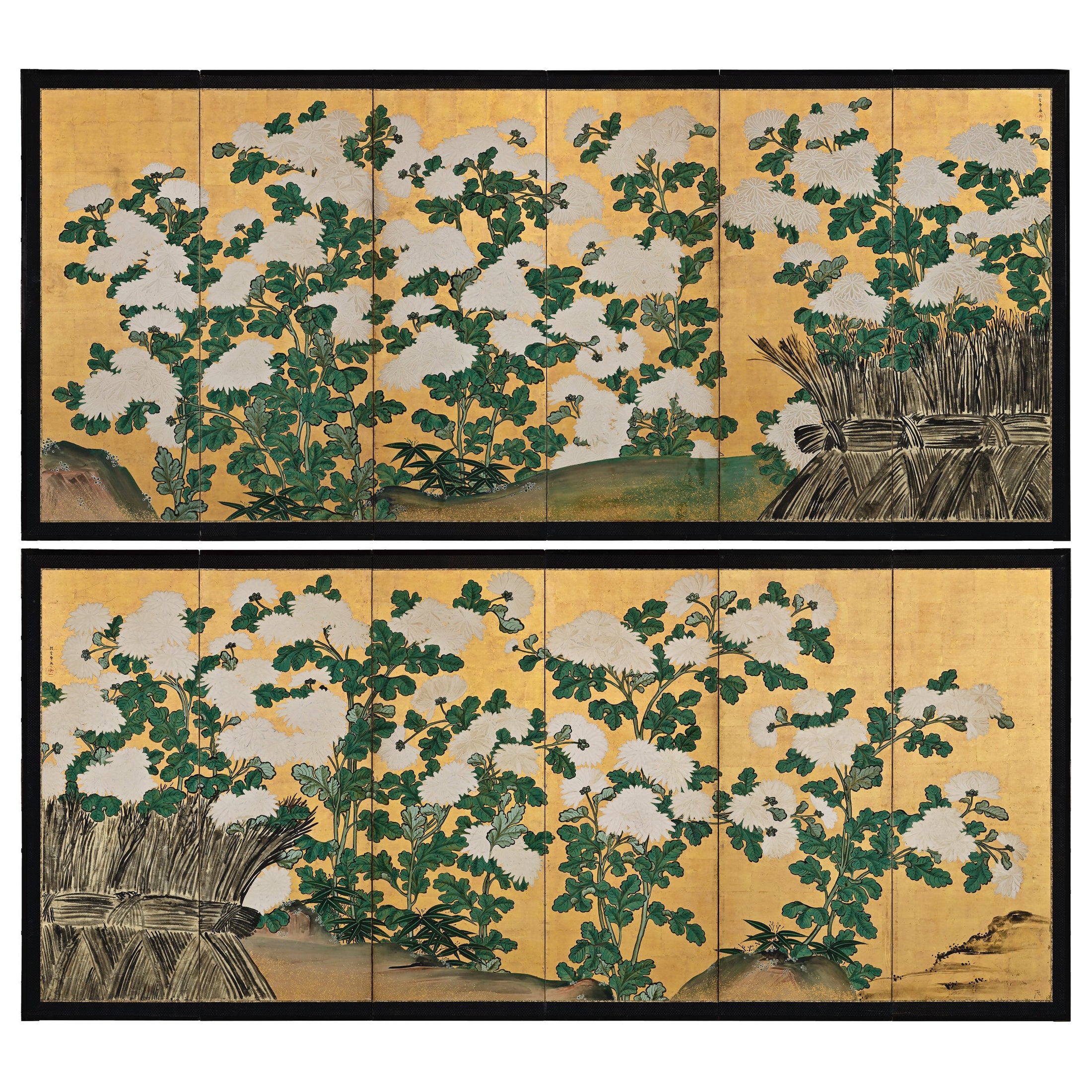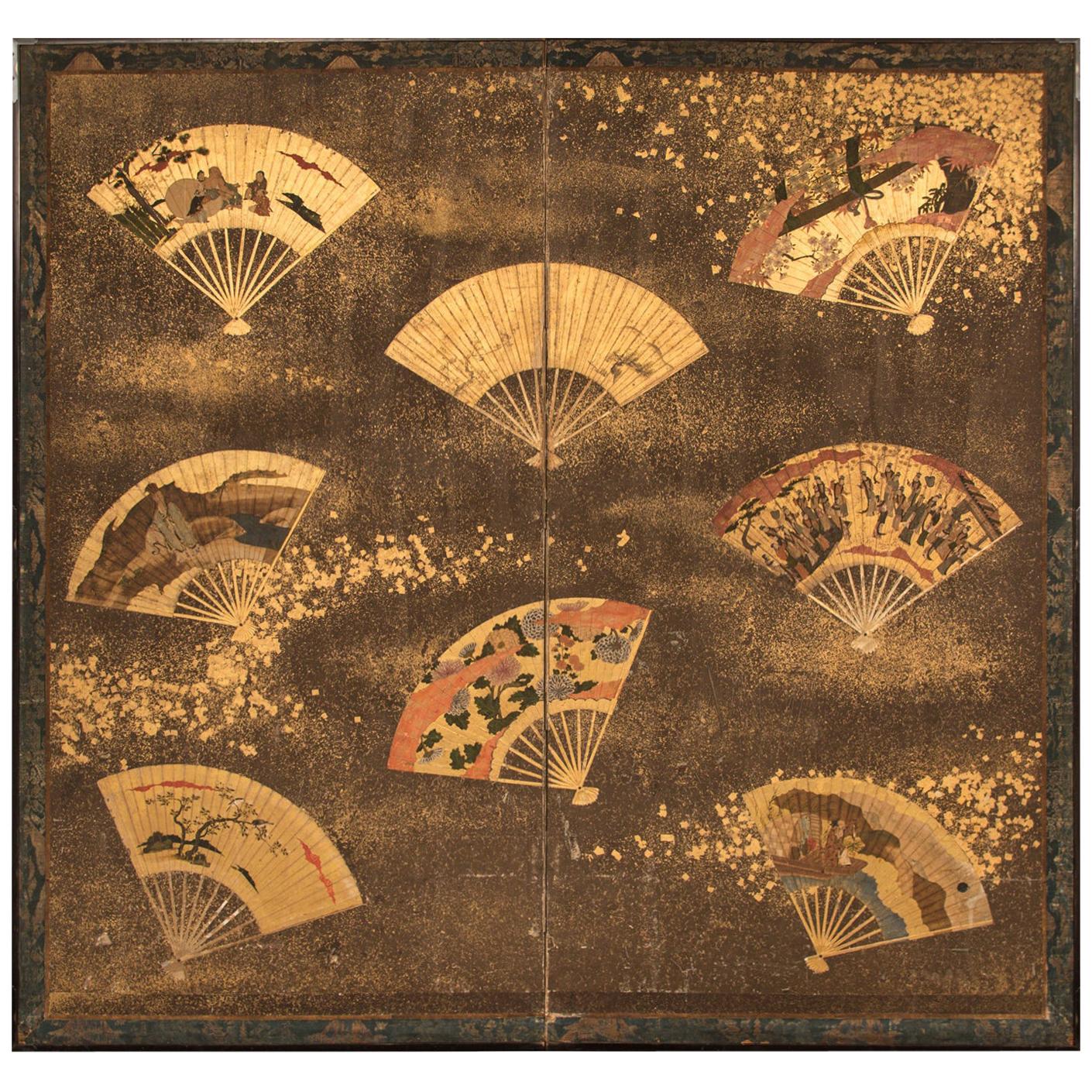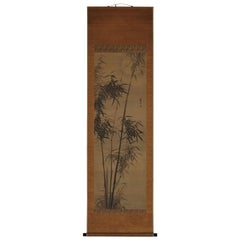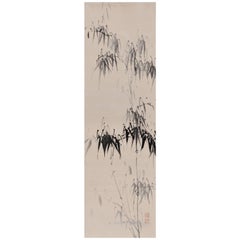
Bamboo, 18th Century Japanese Ink Painting by Cho Tosai
View Similar Items
Want more images or videos?
Request additional images or videos from the seller
1 of 5
Bamboo, 18th Century Japanese Ink Painting by Cho Tosai
About the Item
- Creator:Cho Tosai (Artist)
- Dimensions:Height: 51 in (129.54 cm)Width: 15.5 in (39.37 cm)Depth: 0.75 in (1.91 cm)
- Style:Edo (Of the Period)
- Materials and Techniques:
- Place of Origin:
- Period:1760-1769
- Date of Manufacture:circa 1760
- Condition:Wear consistent with age and use.
- Seller Location:Kyoto, JP
- Reference Number:1stDibs: LU2472310047811
About the Seller
5.0
Recognized Seller
These prestigious sellers are industry leaders and represent the highest echelon for item quality and design.
Gold Seller
These expertly vetted sellers are highly rated and consistently exceed customer expectations.
Established in 2001
1stDibs seller since 2016
60 sales on 1stDibs
Typical response time: 6 hours
More From This SellerView All
- Late 18th Century Japanese Framed Painting, God of Thunder by Yamaguchi SokenLocated in Kyoto, JPRaijin - God of Thunder Yamaguchi Soken (1759-1818) Mid to Late Edo period, circa 1800. Framed painting. Ink and light color on paper. This humorous painting depicts the Thunder God, Raijin, tumbling from the sky, presumably being struck down by one of his own lighting bolts. He clings to one drumstick as the other is in free-fall along with his Taiko drums...Category
Antique Late 18th Century Asian Edo Paintings and Screens
MaterialsPaper
- 19th Century Japanese Silk Painting by Kano Chikanobu, Peacock & BambooLocated in Kyoto, JPBirds & Flowers of the Seasons Pheasants & Plum in Snow Unframed painting. Ink, pigment and gofun on silk Kano Chikanobu 1819-1888 Signature...Category
Antique Mid-19th Century Asian Edo Paintings and Screens
MaterialsSilk
- Japanese Painting, Hanging Scroll, 19th Century Bamboo in MoonlightLocated in Kyoto, JPBamboo in moonlight Gamo Rakan (1784-1866) Hanging scroll, ink on silk. Dimensions: Scroll: 201 cm x 58 cm Image: 137 cm x 45 cm In this early 19th century work by Gamo Rakan a light ink wash applied to the silk background silhouettes the moon and suggests the atmosphere of early evening. Even though it is a literati subject, Rakan’s bamboo is quite realistic with a strong decorative style. The painting finds its inspiration from Chinese Ming dynasty painters who often used a single-tone, jet black stroke to emphasize the calligraphic nature of bamboo. In a different era, decorative would have been seen as somewhat unrefined. But increasingly in the Edo period, it was the hallmark of high style. The Japanese people, in particular the rising merchant class, had gradually become apathetic toward the traditional Sesshu and Kano schools of painting. Chinese professional and amateur painters living in the port of Nagasaki during the 18th century had a profound effect on Japanese painting and the freshness of their style and its decorative appeal contributed greatly to its popularity. Gamo Rakan’s teacher, Tani Buncho...Category
Antique Early 19th Century Japanese Edo Paintings and Screens
MaterialsSilk
- 18th Century Japanese Floral Paintings, Set of 5, Mineral Pigments on Gold LeafLocated in Kyoto, JPA set of 5 Japanese floral paintings from the 18th century. Each painted with mineral pigments directly applied to gold leaf. They were originally designed to be mounted on the leave...Category
Antique Mid-18th Century Japanese Edo Paintings and Screens
MaterialsGold Leaf
$3,800 / setFree Shipping - 19th Century Japanese Screen for Tea-Ceremony, Ink Bamboo and Plum on Gold LeafLocated in Kyoto, JPThree Friends of Winter Nakajima Raisho (1796-1871) Late Edo period, circa 1850 Ink and gold leaf on paper. This is a double-sided Japanese Furosaki or tea-ceremony screen from the mid 19th century; bamboo and plum on the front, young pines the back. It by Nakajima Raisho, a master painter of the Maruyama school in the late Edo and early Meiji periods. In this work Raisho combines exquisite ink brushwork with large open spaces of brilliant gold-leaf to inspire the viewers imagination. Rather than naturalism, he is searching for the phycological impression of the motifs, resulting in abstraction and stylization. His simplification of the motifs the result of looking to capture the inner nature of the objects. This art motif is known as Sho Chiku Bai, or the Three Friends of Winter. Evergreen pine connotes steadfastness, bamboo suggests both strength and flexibility, while plum blossoms unfurling on snow-laden branches imply hardiness. Combined, this trio is emblematic of Japanese new year. Chinese literati were the first to group the three plants together due to their noble characteristics. Like these resilient plants flowering so beautifully in winter, it was expected of the scholar-gentleman to cultivate a strong character with which he would be able to show the same degree of perseverance and steadfastness even during times of adverse conditions. The screen would have been placed near the hearth of a room used for the Japanese tea ceremony, shielding the fire from draughts and also forming a stimulating and decorative backdrop behind the tea utensils. It would have been used in the Hatsugama, or first tea-ceremony of the new year. Nakajima Raisho (1796-1871) originally studied under Watanabe Nangaku before entering the school of Maruyama Ozui. He was the highest ranking Maruyama school painter at the end of the Edo period and was known as one of the ‘Four Heian Families’ along with Kishi...Category
Antique Mid-19th Century Japanese Edo Paintings and Screens
MaterialsGold Leaf
- 17th Century Japanese Screen. Ink Plum Tree & Birds by Kano Naonobu.Located in Kyoto, JPKano Naonobu (1607-1650) Plum Tree and Birds Six-fold Japanese Screen. Ink and slight color on paper. In this evocative ink work spread over a six-panel folding screen, we see the consummation of the elegance and refinement of the Edo Kano school. This 17th century screen is a rare surviving example of a large-scale bird and flower painting by Kano Naonobu, the younger brother of Kano Tanyu...Category
Antique 17th Century Japanese Edo Paintings and Screens
MaterialsWood, Paper
You May Also Like
- 18th Century Japanese Scroll of PoppiesLocated in Hudson, NY18th century Japanese scroll of poppies. Edo Period (early 18th century) Japanese painting of poppies with lilies in the background. Seal on the lower...Category
Antique Early 18th Century Japanese Edo Paintings and Screens
MaterialsSilk, Paper
- Pair of Antique Japanese Flower Paintings by Yanagisawa Kien, circa 18th CenturyBy Yanagisawa KienLocated in Prahran, VictoriaPair of antique Japanese Nagasaki School paintings by Yanagisawa Kien (1704-1758), depicting classical ikebana flower arrangements. Each painted on silk in mineral pigments and beari...Category
Antique Mid-18th Century Japanese Edo Paintings and Screens
MaterialsSilk
- Japanese Antique Ink Painting / 19th Century / Rare Chinese Character PaintingLocated in Sammu-shi, ChibaWe have a unique Japanese aesthetic sense. And only we can introduce unique items through our purchasing channels in Japan and the experience we have gained so far, in such a way that no one else can imitate. It is an ink painting written after the Meiji era. The biggest attraction of this work is that it uses Chinese characters to create paintings. To explain in detail, it is written here in Chinese characters as "un-ryu" . "Un" is a cloud and "ryu" is a dragon. These are embodied and drawn by comparing them to the meaning of Chinese characters. And the clouds depict the clouds hanging over the mountain, and the dragon depicts the climbing toward the mountain. Humorous paintings...Category
Antique Late 19th Century Japanese Edo Paintings
MaterialsAcrylic, Paper
- Pair of Antique Japanese Paintings of Karashishi, Edo Period, 18th CenturyLocated in Prahran, VictoriaA rare pair of antique Japanese Karashishi paintings in a landscape of rocks and peony flowers on gold leaf ground in fine handmade frames, Edo period, early 18th century. The Karash...Category
Antique Early 18th Century Japanese Edo Paintings and Screens
MaterialsGold Leaf
- 18th Century Japanese Two-Panel Screen Collection of Fans on GoldLocated in Hudson, NY18th century Japanese Screen of a Collection of Fans. Paintings on fans depict famous Japanese painting subjects, this screen was most li...Category
Antique 18th Century Japanese Edo Paintings and Screens
MaterialsGold Leaf
- 18th Century Tibetan Thangka PaintingLocated in Chicago, ILA rare striking 18th century Tibetan Thangka depicting the Green Tara seated on a lotus throne ready to step down to offer comfort and pro...Category
Antique 18th Century Tibetan Tibetan Paintings and Screens
MaterialsLinen, Paint
